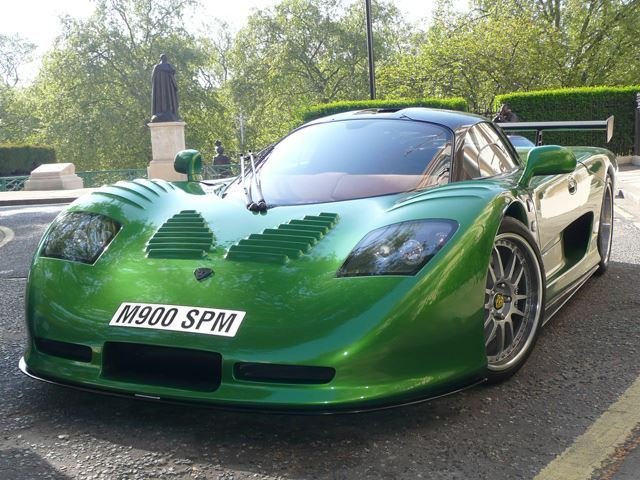Such is the case in the automotive world. If people don't like your cars and you can't make something appealing and innovative, you're doomed from the start. Here are seven supercar companies that never quite hit the mark, although a return is in the cards for at least one of the following.

Sometimes you come across something that just screams rip-off. For example, sodas called Dr. Perky, Mountain Yellow, or Twist Up are trying desperately to look like their competitors. Vector Motors might has well have called themselves Vectorghini. Founder Jerry Weigert started the company in the early ‘70s, but didn't actually produce a car until 1980. This prototype car, called the W2, was supposed to have a 650 horsepower V8 engine. It was supposed to cost $125,000. It was also supposed to start production in 1981.

The W2 didn't appear until nine years later, when it resurfaced as the W8. Only 22 of those were ever built. Weigert was eventually fired from his own company, and after a slew of failed projects, Vector seems to be under for good.


Giotto Bizzarrini made a name for himself by being a chief engineer, test driver and designer at Ferrari. After he was fired from the company, he joined ISO to develop more cars and even designed the infamous Lamborghini V12 engine. He then formed his own company in 1964 and produced a number of notable models, including the 5300 GT Strada and P538S. The cars were formidable street racers, but failed to place in the racing circuit because of their bulky engines. With no wins, Bizzarrini went under in 1969.

We all know that life in the 1980s could be pretty garish. It wasn't the best time for cars. Everything was kind of boxy. Somehow, though, Warren Mosler's Consulier GTP was considered ugly even then. It looks like what would happen if Eeyore from Winnie the Pooh was a car. Long story short: Mosler had a lot of money and decided to design his own dream car. His mistake was thinking that anyone else would want it. Sure, it was fast and incredibly light. Unfortunately, people don't usually buy something that isn't even the slightest bit attractive.

To try to get people's attention, Mosler offered a $25,000 reward to anyone with a production car that could beat a Consulier on the track. Car and Driver did so with a Corvette, but it won mostly due to the Consulier's brake and electrical problems. Mosler never paid up. He did try to make a few other supercars (that were much more attractive), but never sold more than 200 units and abandoned the company a few years ago.


The Back to the Future car? Why is it on this list? Doesn't the fact that it's a famous movie car exempt it from this list of doomed companies? Unfortunately not. The DeLorean DMC-12, the only production car ever made by the company, suffered throughout its run. Sure, 9,000 units were built. That wasn't nearly enough to keep the company afloat, especially since it was founded amidst the gas crisis of the 70s. The car was also expensive, built poorly, and wasn't nearly as powerful as some of its competitors. Is it a supercar? Not really, but it least it had looks — we'll give it that. The future of the company was quickly destroyed by John DeLorean's arrest for drug trafficking. He was found not guilty, but it was too late.


Once known as "the beasts from Blackpool," TVRs are legendary in the supercar world for being scary fast and ferociously styled. When the company went bankrupt in the early 2000s, it was bought by a Russian banker. Although he initially strived to make TVRs mainstream competition cars, he gave up and chose to build wind turbines instead. Who knew such mean cars could be turned into peaceful clean energy? Thankfully, TVR is working on a come back. At the London Motor Show last month, the British carmaker teased visitors with a sketch of its latest creation. And as of March 2016, 350 deposits have been placed for this upcoming two-seater sports car.


You probably remember reading about the Fisker Karma when it first hit the market. It was a stunning, gorgeous car — and it was all electric. What could be better than a supercar that's economical and efficient? It all seemed too good to be true, and it kind of was. Henrik Fisker struggled to actually make the car work properly, as he was more focused on its design. His biggest problem was outsourcing almost everything that went into the Karma, manufacturing the pieces at sites he didn't own. This resulted in supply shortages and quality control problems. Not all is lost, though, as Fisker claimed in May that it’s making a comeback. We’ll believe it when we see it.


The central idea behind Alejandro de Tomaso's cars was similar to what Shelby did back in the day: stuffing a huge V8 engine inside a sleek European body. Three magnificent cars came from this company: the Vallelunga, the Mangusta and the Pantera. Still, even after the success of the Pantera, the company changed owners countless times. Most recently, the company's newest owner, who is now in jail, tried to make a business sedan that just might be the most boring thing ever.
Nouvelles connexes



